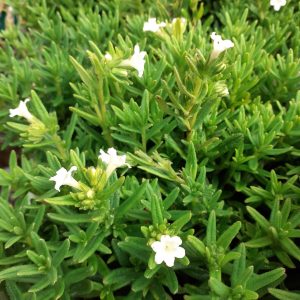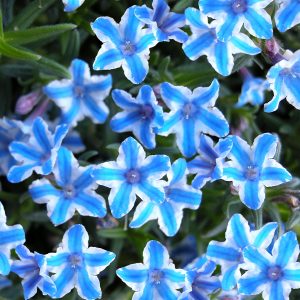Lithodora, is a stunning evergreen perennial known for its vibrant blue flowers and low-maintenance nature. Follow this planting guide for successful cultivation and the flourishing of your Lithodora plants.
Site Selection
Sunlight: Choose a location with full sun to partial shade. Lithodora thrives in well-lit areas and displays more vibrant colours in ample sunlight.
Soil Type: Plant Lithodora in well-draining, acidic to neutral soil. It prefers slightly acidic conditions, so amend the soil with organic matter if needed.
Planting Time
Spring or Autumn Planting: Optimal planting times are in spring after the last frost or in autumn, allowing the plant to establish before extreme temperatures.
Planting Process
Digging the Hole: Dig a hole twice the width of the root ball and at the same depth. Space multiple Lithodora plants at least 12-18 inches apart.
Root Ball Positioning: Place the Lithodora in the center of the hole, ensuring the top of the root ball is level with the soil surface.
Watering
Initial Watering: Water the plant thoroughly after planting to settle the soil. Continue to keep the soil consistently moist during the first growing season.
Regular Watering: Once established, Lithodora is drought-tolerant but benefits from regular watering, especially during dry spells.
Mulching
Mulch Application: Apply a layer of organic mulch around the plant to retain moisture, suppress weeds, and insulate the roots. Keep the mulch away from the base to prevent rot.
Fertilisation
Balanced Fertiliser: Lithodora generally doesn’t require heavy feeding. Apply a balanced, slow-release fertiliser in spring before new growth appears.
Pruning
Light Pruning: Trim back the plant lightly after the first flush of flowers to maintain a compact shape. Avoid cutting into old wood.
Winter Care
Cold Protection: In colder climates, consider providing winter protection, such as a layer of mulch, to insulate the roots and protect against extreme cold.
Container Planting
Well-Draining Containers: If planting in containers, use pots with drainage holes and a well-draining acidic mix. Ensure the container is large enough to accommodate growth.
Pests and Diseases
Vigilance: Keep an eye out for pests like spider mites or diseases such as root rot. Treat promptly with insecticidal soap or fungicides if needed.
Enjoy the Blooms
Blooming Period: Lithodora typically blooms from late spring through early summer. Enjoy the radiant blue flowers that attract pollinators to your garden.
By following these guidelines, you’ll create an ideal environment for your Lithodora plants to thrive. Customise care based on your local conditions and the specific variety you’ve chosen. Happy gardening!






